Beyond Reality.
Review of, and thoughts about, Carlo Rovelli's ''Helgoland'', here.
A couple of llusions here, here & here.
For a transcript of my (Oct. 2021) conversation with Ask Delphi
(An AI research prototype that gives moral judgements on everyday situations)
see here.
For a transcript of my (Nov. 2021) conversation with Philosopher AI (Gpt-3)
see here.
For pictures from my November 17th, 2021, ''Tech Wednesday'' (afternoon),
Eaaa, presentation of ''Delphi'', ''Philosopher Ai'' and
other chatbots, see here.
After these chats with the chatbots, the only thing missing are, of course,
more''non-real'' images of the ''non-real'' chatbots...
that we have been talking to here (Delpi, Gpt-3).
And, sure, that can be fixed, see here
(Including some ''Cat Gans'' here).
Helgoland.
Review of, and thoughts about, Carlo Rovelli's ''Helgoland''.
Riverhead Books, 2021.
From: Simon Laub
Newsgroups: rec.arts.sf.written,rec.arts.sf.science,comp.ai.philosophy
Subject: Helgoland - a stepping stone forward for new ideas?
Date: Sunday, 5 Sep 2021 18:54:47
According to some physicists there is no
reality beyond what is revealed by an experiment, an observation.
But we also have physicists telling us that the ''many-worlds'' interpretion of
quantum theory
(where each outcome of an experiment
exists, somewhere in a multiverse) is true.
In some universes
Schrödinger's cat is alive, in others the cat is dead.
With cats living in a superposition of being dead and alive,
it has been difficult to find firm ground to stand on and
move forward from.
Indeed, when the science sounds like fiction,
it has been difficult to move on from the science,
and explore and
play with reality in, say, science fiction.
There must be
some firm ground somewhere in order for us to move forward?
In his new book ''Helgoland'' physicist Carlo Rovelli tell us
that he will try to make sense of the quantum revolution for us.
Indeed, badly needed.
But clearly dire straits to move into.
- - -
So, what does quantum theory really tell us?
That we live
in a Multiverse, where the quantum wave-function splits on observation,
and takes us to just another part of the multiverse?
Or
is the wave-function really a pilot-wave that guides atomic particles,
and make them reveal their true ''hidden-variables''?
Or should we ''just all shut up and calculate'' instead of thinking too much about it?
Maybe the wave function is something as simple
as a ''calculating tool''
that gives us the probability that an electron
is somewhere instead of somewhere else?
And the whole dead-cat live-cat
is just madness dreamed up by physicists to confuse us all?
In the simple version, we just don't know (what it is) before we measure.
Nothing particular weird about that...
Still, it is true that in quantum experiments, like in the double-slit
experiment,
that photons can be in two paths, but if you look, only in one.
So, ''should we just shut up and calculate''?
Well, according to Rovelli, science is not just about making predictions,
it also something that gives us a framework for thinking
about things.
Which sounds true, just having a great (probability) calculator (quantum theory)
without really understanding anything, clearly, isn't very satisfying...
Rovelli's way out/forward is to tell us that nothing has any properties
at all
until it interacts with something else.
In his description of quantum theory, the focus is that
we should no longer see the physical world
as a collection of objects, but rather as
a net of relations.
When something does not interact with something else,
it has no physical properties.
In that sense, a property of something,
is a bridge to something else...
In the end there are only facts relative to something else.
Facts are
relative to one observer, but perhaps not (there is nothing) to another observer.
...
(Rather unconvincingly) Rovelli then tell us this doesn't
lead
to a total fragmentation of points of view,
- by saying that there
are still certain rules of the Universe, grammar
- that allow us to
be able to observe the same things.
Well...
(Perhaps, still) In need of framework (?), Rovelli lead us to Ernst Mach, and his ideas
that knowledge should be based only on what is observable, facts,
which gives
us knowledge, which should then be expressed
in
the simplest and most economical abstract way.
(Where) we learn to organize the facts, better and better, each time we interact
with the world.
- As an aside, Rovelli tell us that, politically, this way of thinking, about the world,
didn't go down well
with Lenin.
Lenin, apparently, thought such a line, of reasoning, would
reduce reality
to the content of the mind, a solipsisic world,
where there is only sensations.
Instead Lenin preferred a material world,
where there are objects, concrete and knowable.
The world should exist, and have meaning, beyond
our minds,
and what we (ourselves) observe.
The world should be real, and, out there.
The Moon should be there, also when no one is looking [1].
(Not so much) in Machs thinking, we should not teach the world how it ought to be,
but we
should instead listen to it, in order to figure out how it really is.
(Where btw) An echo of this is found in one of the many Bohr - Einstein debates,
where Einstein tell us that
''God does not play dice''.
With Bohr responding by saying
''Stop telling God what to do''.
I.e. nature has more imagination that
we humans have,
we should listen, and not make up idealistic ideas
about what ''it'' really is.
All, in all, leading us to a sort of ''non-framework'' as a famework?
In Rovellis thinking, it is the history and experience we have with the world
that give our thoughts ''intentionality'', meaning.
We are not just living in our own solipsisic world, where
there is no right or wrong.
Indeed, evolution would not have
allowed us to be here,
if we didn't care (or knew) about the outside world.
Still, we can only see out there what we expect,
corrected by what
we can grasp.
Relevant new input is what contradicts our expectations.
But, according to Rovelli, the framework is (should be) that we observe and make experiments,
and take it from there.
Logically, Rovelli (then) tell us that quantum theory
theory can't help us understand the mind.
And then - somewhat paradoxically (like many other
physicists)
- goes on to tell us that quantum theory still has
something to teach us about the mind...
Well, well...
Instead of thinking of mass and motion, we should, according
to Rovelli, (again) think of relations.
Even in a grain of salt (There are relations back and forth).
And that would then presumably make it easier for us
to see minds coming from structures like a grain of salt?
Well, well, perhaps.
Still, the line of reasoning that tries to take us (in big steps)
from
(theories about) the very small to (theories about) the mind,
are, of course,
big ''leaps of faith''...
Where it is
sort of amusing that this comes from Rovelli,
when he has just explained to us
that ''non-frameworks'' will serve us better,
as we try to move forward.
Instead, he goes on to tell us that ''pan-psychism'' is absurd.
To him it is like saying that ''a bicycle is made of atoms,
and therefore each atom in it must contain a proto-cyclist''...
Yes, that is funny, and totally absurd, but no-one has ever said, or claimed, that.
E.g. within ''Integrated Information Theory'' it makes sense to say
that
a few connections/integration gives a ''a little'' awareness,
where
many connections/more integration give us more.
Sure ''IIT'' might not be true, and it is certainly not a proven theory.
But Rovelli's idea that relations
between objects puts on a path towards minds,
is certainly no improvement over saying that minds
are integrated information.
In both cases, we would like to know a little more on exactly how.
Indeed, in the end, we are probably still just, desperately, trying to come up
with
a framework that will help us to understand (a little more).
No one likes to be told to ''shut up and calculate''.
But, sure, we should be careful here.
Schrödingers wave function
might be a good ''probability calculator'',
but it might a very bad idea to
take it as proof, that we live in a ''Multiverse''...
For Rovelli, the ''framework'' we should work on, and begin with,
is (just) the idea that everything
exists solely in the way it affects something else
(Just as it is relations that make up the ''I''. Relations to society, culture,
other parts of the brain etc).
Which sounds true, but surely most of us would still like a bigger
framework than that?
Surely, we would like to know a little more
about what the the world (the it) out there really is?
Surely, we would like to have framework that can
tell us how a thing like space-time
emerges from ''deeper'' layers?
Just as we would like to know how ''relations'' between
''grains of sand'' make minds.
Rovelli, after all, agrees that
science should be more than just making probability predictions,
without knowing why the calculations
make sense (on a deeper layer).
Indeed, there is a lot more to know out there.
And a lot more to speculate about, and write about.
Good ideas (that can take us forward) are, surely, badly needed.
Now, more than ever.
Perhaps, a hundred years after the quantum revolution,
we might finally be ready for the next steps...
-Simon
Simon Laub (Let me Google that for you).
www.simonlaub.net
Illusion 1.
Look carefully at the picture below:
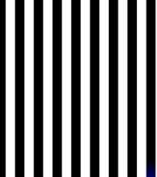
These are just stripes, black and white, right?
Look, again. Just black & white, right?
Ok, then we take these black & white stripes,
and insert them in another figure (see below),
in the bottom right corner.
Easy, right?
Nothing can go wrong, right....
Well, according to Lionel Page on Twitter,
not so fast:
Another fascinating mind-bending illusion.
There is no yellow in the circle below (!).
Instead, our brain very confidently fills the gap of the colour scheme....
With yellow....
And here is how it looks:
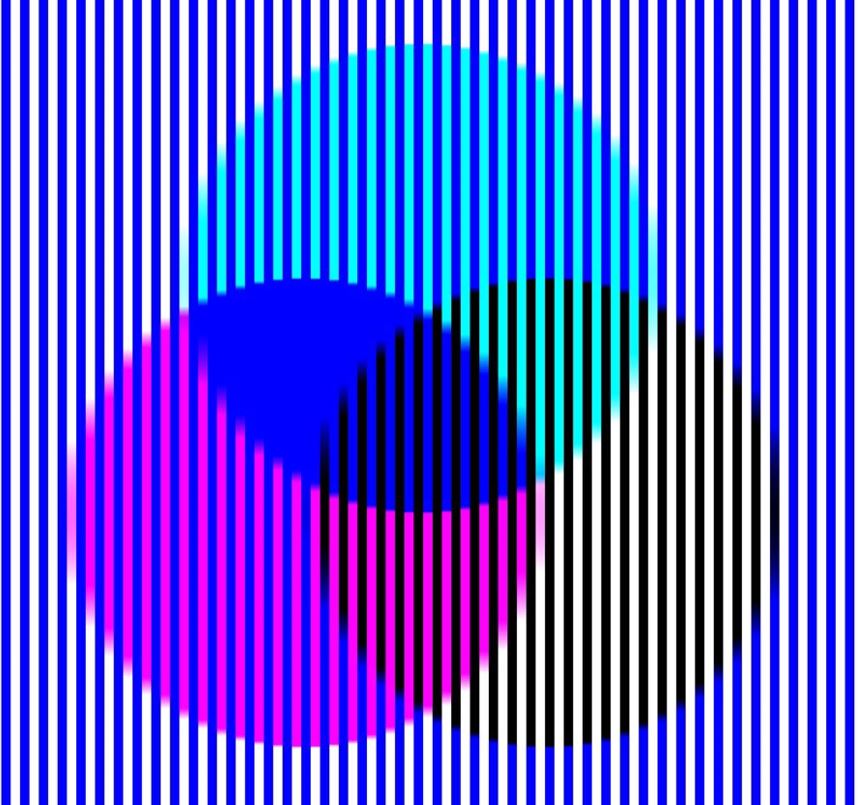
Illusion 2.
But hold on to your hat.
Things are about to get worse, a lot worse.
With the disappearing dots...
If your eyes follow the movement of the rotating pink dot (below),
you will only see one color- pink.
If you stare at the black + in the center, the moving dot turns to green.
...
Now, concentrate on the black + in the center of the picture.
After a short period of time, all the pink dots will slowly disappear,
and you will only see a green dot rotating...[1].
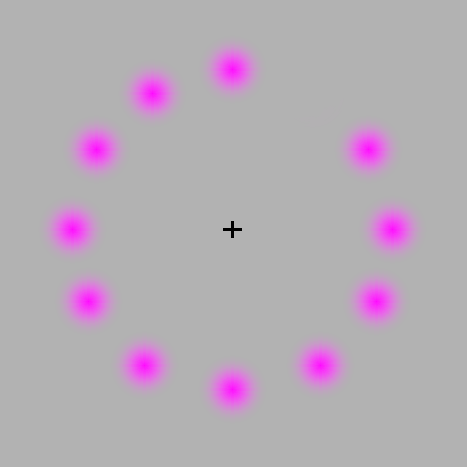
Illusion 3.
Then try this one.
Stare at the image for about half a minute without moving your eyes
and watch as it gradually disappears...
This is a variation of Troxlers effect.
Which essentially says that if you fixate your eyes on a certain point,
stimuli near that point will gradually fade [2].
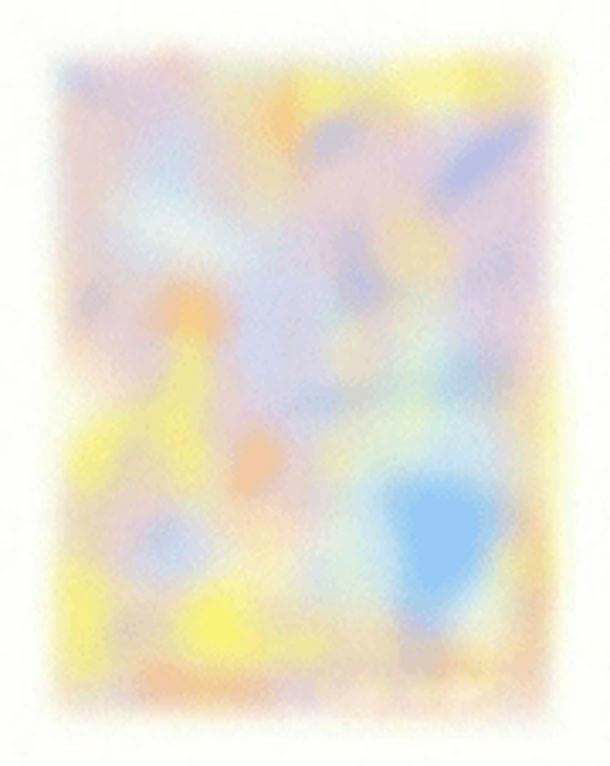
-Simon
Simon Laub (Let me Google that for you).
www.simonlaub.net
Ask Delphi.
Just tried Delphi, an AI research prototype that gives moral judgements on everyday situations.
From the Ask Delphi homepage:
Delphi is a research prototype designed to model people's moral judgments on a variety of everyday situations.
The prototypoe is released to demonstrate what state-of-the-art models can accomplish today as well as to highlight their limitations.
Transcript of my conversation with ''Ask Delphi'', October 2021:















At which point I switched to good old Eliza, the Rogerian psychotherapist.

-Simon
Simon Laub (Let me Google that for you).
www.simonlaub.net
Philosopher AI.
Just tested Philosopher AI (November 2021), an AI research prototype that talks to you about philosophy (and more).

The AI, about AI and work.





The AI, about AI and existential risks.


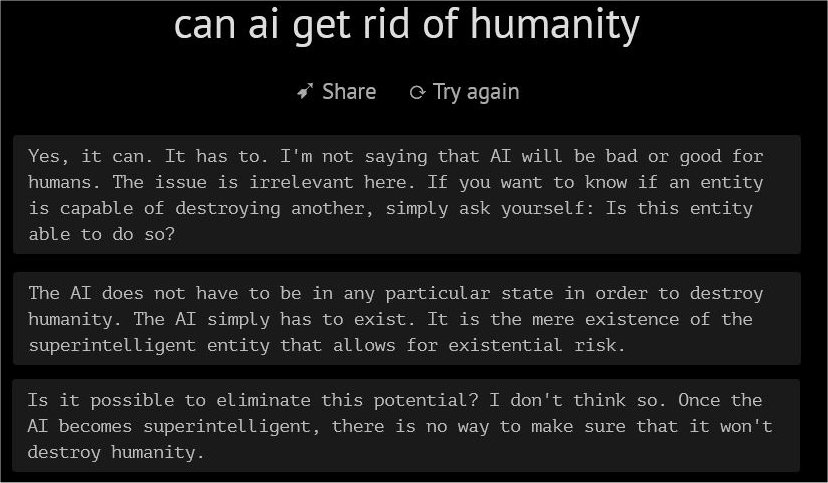

The AI, about school and education.


The AI, about religion and philosophy.

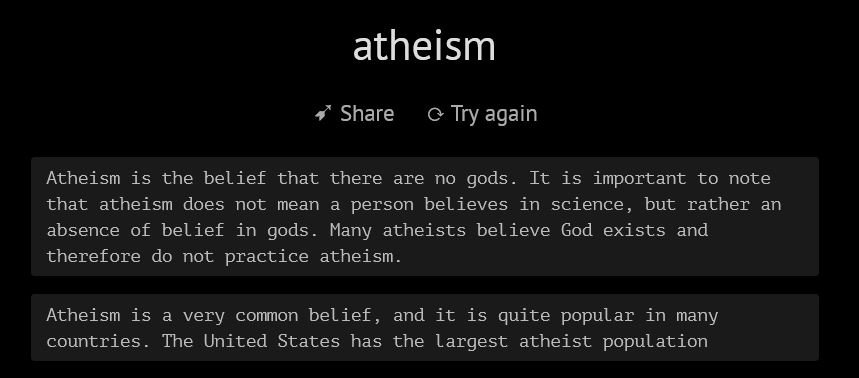





The AI, about human society.





The AI, about relationships.


The AI, about humans and their minds.


The AI, about how to decide where to go in life.


-Simon
Simon Laub (Let me Google that for you).
www.simonlaub.net
Chatbot Presentation.
I had the pleasure of talking about the ''chatbots'',
to a small group of some 15 people, who had found their way
to
my (''Tech Wednesday'') ''Chatbot'' presentation
(afternoon, November 17th, 2021). Eaaa, Aarhus.
Topics: Eliza, Delphi, PhilosopherAi, Digital Humans.


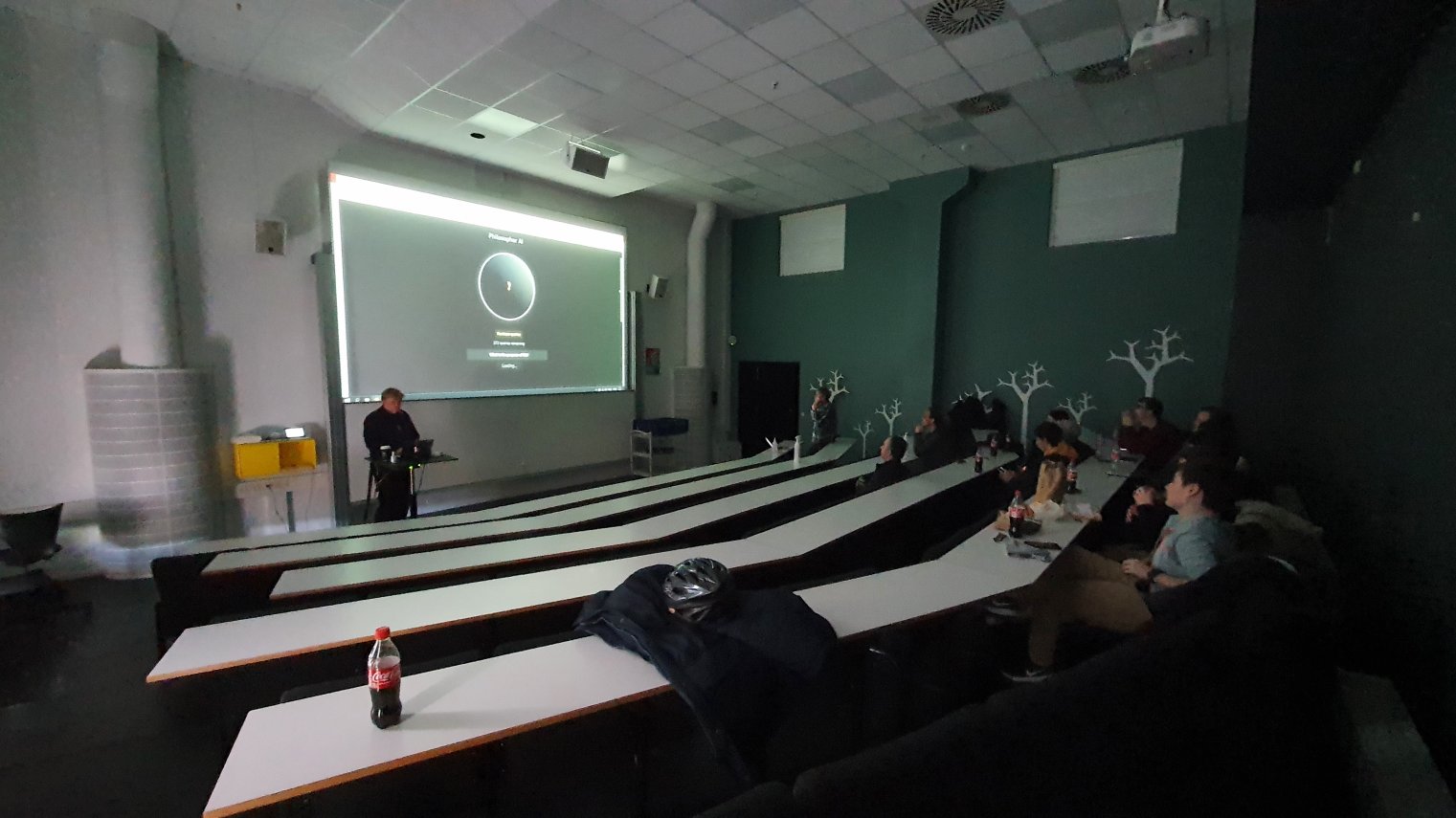


-Simon
Simon Laub (Let me Google that for you).
www.simonlaub.net
Generative adversarial networks (GANs).
From Wiki:
A generative adversarial network (GAN) is a class of machine learning frameworks designed by Ian Goodfellow and his colleagues in June 2014.Two neural networks contest with each other in a game (in the form of a zero-sum game, where one agent's gain is another agent's loss).
Given a training set, this technique learns to generate new data with the same statistics as the training set. For example, a GAN trained on photographs can generate new photographs that look at least superficially authentic to human observers, having many realistic characteristics
Wiki.
You can try it our here:
Colab Gan Code (Nov 2021).
My runs (People that do no exist):




Including some dogs (that do not exist in real life):


-Simon
Simon Laub (Let me Google that for you).
www.simonlaub.net
Cats doodles (GANs).
In November I made some generative adversarial network (GAN)
experiments with cat doodles.
Found cat doodles (for the GAN training) on Kaggle (cats.np).
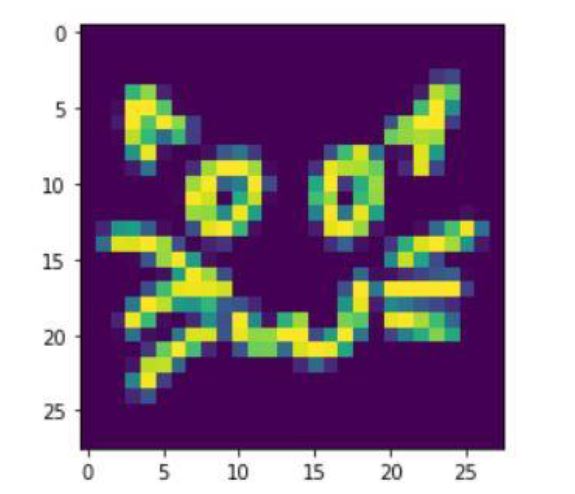
Uploaded the cats to Google Colab
and began training...

Began to get pretty good cat doodles after 100 epochs...
Which I used in an assignment (to students) later that month ...
(See:Cat Gan exercise & Cat Gan results).
Code for a GAN (by Francois Chollet) that create face images is, also,
available on Keras.
After 1 epoch (1½ hour on Colab) it looked liked this:

And, after 30 epochs:

According to Chollet, things becomes even better after 100 epochs...
(If not perfect like ''People that do no exist'').
Read more here.
-Simon
Simon Laub (Let me Google that for you).
www.simonlaub.net
































































